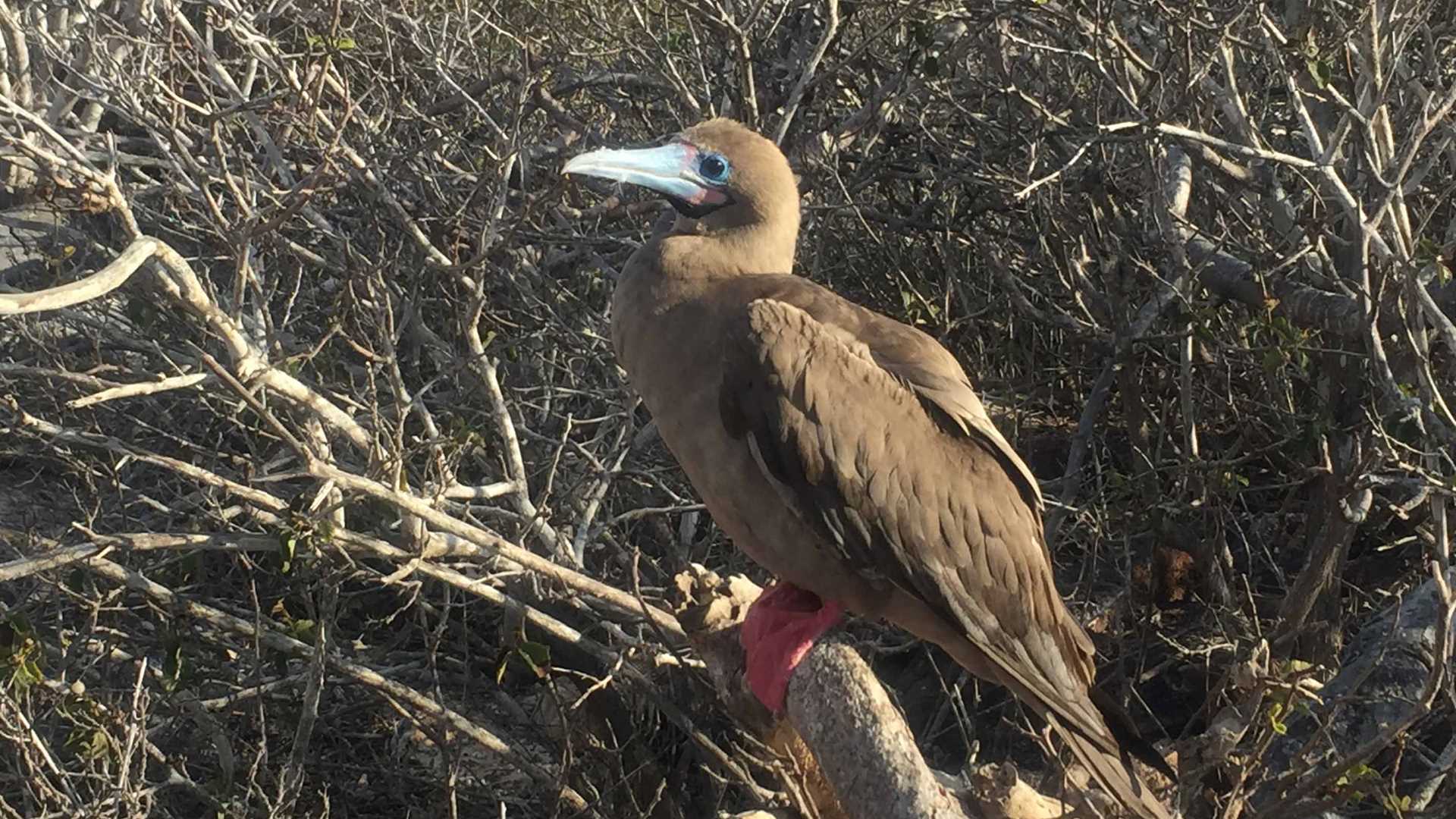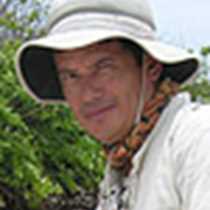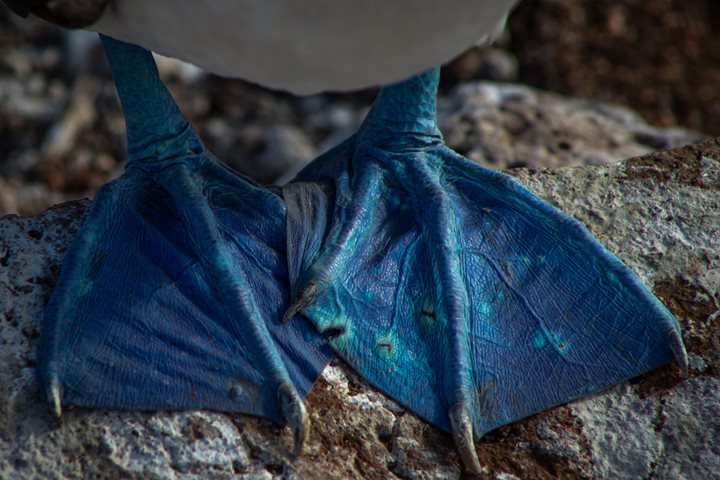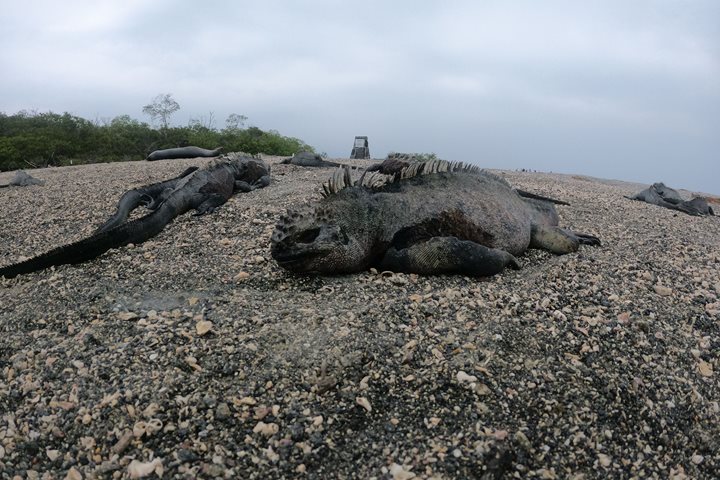Located at the northeast of the Galapagos archipelago, Genovesa or Tower Island is unique for many reasons. It is home to millions of birds and has no land reptiles, the island has an active volcano, and the flooded caldera is used as anchorage for ships that come to visit this beautiful place. Early in the morning, we started our day with a pre breakfast kayak outing with an exquisite combination of volcanic landscapes and wildlife sightings.
With excellent weather conditions after breakfast, we set foot on the coralline white beach of Darwin Bay. We were welcomed by many species of birds, including great frigate birds, Nazca boobies and red footed boobies, who are considered the smallest and least often seen of the three booby species in Galapagos, however the most abundant on Genovesa. We had chance to observe sea gulls, Yellow-crowned night herons, Galapagos mockingbirds, sharp billed ground finches and even a Short-eared owl. Animals continue performing their normal life without showing a single trace of concern of our presence. Attentive bird parents care for their chicks, birds in different growth stages acting as if they do not care if we observe them are just an example of the normal life that carries on here.
One of the reasons Genovesa is unique is the absence of land reptiles. This particularity makes the short eared owl the top predator due to the lack of competition, which allows us to observe it hunt during the day. Lack of reptiles make the endemic prickly pear cactus species (Opuntia helleri) so peculiar. Its spines are soft like hair and their fruit grow close to the ground. These cacti are living proof of evolution and adaptation in the botanical world.
In the afternoon we visited Prince Philip Steps, a place located at the top of the cliff with abundant sea birds and covered with a dry forest of Palo Santo trees. As soon we got to the top of the cliff a great surprise was waiting for us. A short eared owl was sitting peacefully on the handrails observing us attentively. It stayed in the same place until the end of the hike. Walking inland we observed frigate birds and red footed boobies perched on the trees, including some of them feeding their young chicks. On the flat rocks juvenile Nazca boobies flapped their wings as if they were trying to prepare their muscles, anxious to start flying. With the last beams of sun we returned to the National Geographic Islander. The sunset was beautiful and we sat watching it as we remembered all of the magnificent creatures and places we visited during this magical week.







